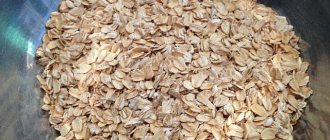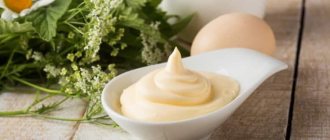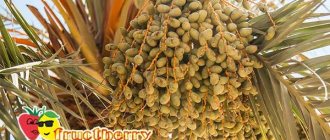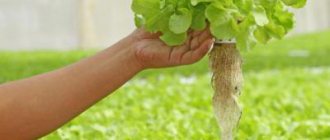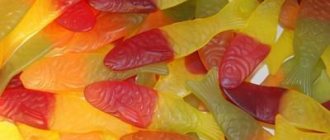Cranberry varieties
Cranberries, or “northern lemons,” have been cultivated since the first half of the 19th century. At this time, special attention was paid to large-fruited varieties. Since the end of the last century, breeders began to develop new varieties of bog cranberries. Currently, there are more than 20 varieties of cranberries.
Let's name the most common of them:
- Ben Lear is the earliest known cranberry variety. The berries, a dark burgundy color with a sweet and sour taste, reach full ripeness at the end of August.
– a mid-season variety with purple fruits shaped like a heart.
Sazonovskaya- Scarlet Reserve is a late-ripening variety with large but sour-tasting fruits.
- Franklin is a mid-season variety that produces intense red berries. The advantage of the fruits of this variety is their long shelf life. They stay fresh for up to a month.
- Severyanka is a variety of Russian selection with large berries. Its advantage is its high resistance to frost.
Nutritional value, calorie content and composition of cranberries
Cranberries have a very low calorie content even among berries. 100 grams of cranberries contain only 28 kcal, and a glass - just over 40. And this is not surprising, because cranberries are almost 90% water and contain a very small amount of carbohydrates.
Nutritional value of 100 g cranberries:
- 88.9 g water.
- 3.7 g carbohydrates.
- 0.5 g protein.
- 0.2 g fat.
Composition of cranberries (per 100 g):
Vitamins:
- 15 mg vitamin C (ascorbic acid).
- 0.3 mg vitamin PP (nicotinic acid).
- 1 mcg vitamin B9 (folic acid).
- 0.02 mg vitamin B1 (thiamine).
- 1 mg vitamin E (tocopherol).
- 0.08 mg vitamin B6 (pyridoxine).
- 0.02 mg vitamin B2 (riboflavin).
Minerals:
- 119 mg potassium.
- 0.6 mg iron.
- 14 mg calcium.
- 11 mg phosphorus.
- 15 mg magnesium.
- 1 mg sodium.
Chemical composition of cranberries
Crane grass is a storehouse of useful organic substances and inorganic compounds. It includes:
- substances (natural thickeners added to many desserts);
- macro-sugars (glucose, fructose, sucrose);
- acids (citric, malic, oleanic, quinic, succinic);
- bioflavonoids (including colorants anthocyanins);
- phenols (among them tannins, responsible for the astringent taste);
- pectin substances;
- macro- and microelements;
- vitamins.
Macro- and microelements are mainly present in the form of salts. Most of all in these berries (in brackets - % of the daily value):
- potassium – 120 mg (4.8%);
- magnesium – 15 mg (3.8%);
- silicon – 1.5 mg (5%);
- copper – 61 mcg (6.1%);
- molybdenum – 5 mcg (7%);
- cobalt – 1.44 μg (14.5%);
- manganese – 0.36 µg (18%).
From the variety of vitamins that fruits contain (in parentheses - % of the daily value):
- pantothenic acid (B5) – 0.295 mg (5.9%);
- pyridoxine (B6) – 0.08 mg (4%);
- biotin (B7, also known as vitamin H) – 100 mcg (200%);
- ascorbic acid (vitamin C) – 15 mg (16.7%);
- vitamin E – 1 mg (6.7%);
- phylloquinone (vitamin K) – 5 mcg (4.2%).
Fact! Although cranberries are called “northern lemon” in Siberia, they contain 3 times less vitamin C, and are also inferior in quantity to such garden berries as raspberries, currants, and gooseberries.
The benefits and harms of cranberries
Beneficial properties of cranberries:
- Cranberries are capable of removing heavy metal salts and radioactive substances from the body. In addition, it prevents the development of cancer. For this reason, cranberries are especially recommended for residents of environmentally disadvantaged regions and people employed in hazardous industries.
- Berries have a positive effect on the cardiovascular system. They strengthen the walls of blood vessels, giving them elasticity, which prevents the formation of blood clots.
- Cranberry juice helps remove kidney stones.
- Compresses made from crushed cranberries relieve headaches.
- Grated berries are used to treat abrasions and burns, and cranberry juice is used for dermatitis and fungal diseases.
Harm of cranberries
- Cranberries can cause severe allergies, so people prone to them should consume the berry with great caution.
- Cranberries are not recommended for those with high acidity and peptic ulcers. For these diseases, cranberries can only be consumed in the form of juice diluted with water.
- Due to their high acid content, fresh berries should not be eaten on an empty stomach. They are best used as dessert or processed.
Properties of cranberries
Benefit
- Eating a small amount of berries from time to time will be a good prevention of caries and tartar deposits, and rinsing your mouth with berry decoction reduces bleeding gums.
- The delicacy will improve digestion when the acidity of gastric juice is low.
- Cranberry drinks are good for colds due to vitamin C and diaphoretic effects.
- The mild diuretic effect of crane grass, together with its antimicrobial properties, makes it a valuable remedy for the treatment of inflammatory diseases of the urinary system: urethritis, cystitis, pyelonephritis.
- Vitamins and minerals in fruits have a positive effect on blood vessels, preventing cholesterol plaques from settling on their walls, participate in the synthesis of insulin and are needed for the proper functioning of the nervous system.
- It is useful to consume berries in small quantities for pregnant women to prevent the development of varicose veins and get rid of edema.
- If there is no other antiseptic at hand, diluted juice is used to treat wounds and scratches to prevent suppuration and speed up healing.
- Folk beauty recipes advise using decoctions for washing when treating problematic oily skin and as a hair rinse for dandruff.
Harm and contraindications
- Substances that give fruits a red color can cause allergic diathesis in children.
- Organic acids destroy tooth enamel and can cause pain in people with sensitive teeth.
Important! Teeth sensitivity increases after whitening and scaling procedures.
- Taking squeezed berry juice in its pure form can cause heartburn.
- Long-term and daily consumption of berries and juice can lead to gastritis, pancreatitis and peptic ulcers. If there are gastrointestinal diseases, they are excluded from the menu.
- It is better for women to limit cranberries 3-5 days before menstruation - they make bleeding more profuse.
- Cranberry juices and decoctions are not used for washing and rinsing hair with dry skin - in this case, their acidity is harmful.
- Eating berries in any form cannot be combined with taking antibiotics, aspirin and drugs that reduce blood viscosity.
Cranberry in the diet of pregnant and lactating women, children, diabetics and athletes
Cranberries are extremely beneficial for pregnant women It has a positive effect on the genitourinary system, eliminates swelling and improves immunity. In addition, berries and cranberry juice improve blood circulation in the uterus, which is undoubtedly beneficial for the fetus. Nursing mothers should refrain from eating cranberries, as they can cause severe allergies in the baby.
It is also not recommended to give cranberries in any form to children under three years of age.
And for diabetics . Firstly, it contains a minimal amount of glucose. Secondly, it normalizes hormonal levels thanks to ursolic acid. You can eat a glass of cranberries a day, taking into account bread units.
Cranberries are no less useful for athletes . It will supply the body with the necessary number of vitamins. If you need to lose weight before a competition, cranberry, as a dietary product, is ideally suited as a component of dietary nutrition.
Frozen cranberries - features
After harvesting, the berries can be used fresh to prepare fruit drinks, but many housewives prefer to freeze the product or prepare compotes from it in order to preserve all the benefits of fresh fruits. Freshly picked cranberries can be kept in the refrigerator for no more than 20 days, and then require heat treatment.
Frozen cranberries retain maximum beneficial properties due to the content of natural preservatives, where benzoic acid plays the main role. It is this element that allows you to keep the product in the freezer for 2 years without losing its healing qualities.
Following some rules will allow you to get maximum health benefits:
- the blast freezing method cannot be used for heat treatment of berries;
- the berries must be sorted, removing damaged and poor quality ones;
- You should not wash the berries before placing them in the freezer, as this may damage the integrity of the fruit shell;
- before freezing, the fruits should be spread on a flat surface in one layer and sent for freezing, which will preserve the integrity of the berries and prevent them from sticking together;
- The optimal shelf life is 6 months, but cranberries can be frozen for up to 2 years.
Did you know? The flowering of the cranberry bush is very reminiscent of the appearance of a crane, which is why the berry got its name in English “cranberry” and in Ukrainian “crane”.
For storage, it is recommended to use a food container rather than a plastic bag. It is also worth mentioning that it is necessary to defrost cranberries gradually; it is better to leave them at room temperature overnight and drain the resulting liquid in the morning. This method will ensure the safety of vitamins.
Chemical composition
The composition of the berries is unique and medicinal due to the presence of the following elements:
- tannin is a natural antibiotic that can destroy pathogenic microorganisms and bacteria, and also enhances the effect of synthetic antibacterial agents. This substance gives cranberries their specific bitter taste;
- ascorbic acid, the maximum concentration of which is found in the pulp of the berry;
- ursolic acid, which ensures the development of muscle tissue;
- acids: malic, quinic, citric, benzoic;
- vitamins A, PP, E, K1 and group B is widely represented;
- potassium, calcium, phosphorus, magnesium, copper, iron;
- glucose and fructose;
- pectins;
- polyphenols;
- antioxidants;
- indigestible dietary fiber that improves intestinal motility.
The berry shell contains numerous astringent components , which ensure the removal of harmful substances from the body and tone blood vessels. The composition also includes prebiotics that help normalize microflora and intestinal functioning.
Important! The substances contained in the berries in moderate doses can prevent the development of caries, however, with abundant consumption of fresh fruits, damage to the enamel on the teeth may occur.
Calorie content
The potential energy charge of the product varies slightly depending on its state and is calculated per 100 g:
- fresh: 26 kcal;
- frozen: 18 kcal;
- dried: 280 kcal;
- candied cranberries: 188 kcal.
The nutritional value
The calorie content of the product is very low, due to which it is actively used in dietary nutrition, and its beneficial components help burn excess calories and reduce body weight; a 100 g serving of cranberries contains:
- protein: 0.5 g;
- fat: 0 g;
- carbohydrates: 6.8 g.
How to choose, collect, consume and store cranberries?
- Cranberry harvesting begins in mid-October and continues until snow falls. When picking, you can use a plastic hand harvester, but it is better to pick each berry separately.
- Fresh cranberries can be stored in a cool, dry place for up to 10 days, and in the refrigerator for up to two weeks.
- If you rinse freshly picked cranberries with cold water, and then place them in jars and pour cooled boiling water over them, they will be stored in the refrigerator for a whole year.
- If you buy cranberries on the market, then first of all you should pay attention to the appearance of the berries. Fresh berries should be shiny and firm to the touch. In addition, they must be painted in an intense red color. Dried, wrinkled berries with a brownish or faded color cannot be purchased.
- Cranberries can be dried and frozen. Dried cranberries can retain their beneficial properties for three years, frozen ones for a year.
Application
The harvested fruits can be eaten fresh, but most of the harvest is processed. Cranberries are used to make jam, marmalade, syrup, marmalade, marshmallows, and pie filling. Many different drinks are also prepared from berries: juice, fruit drink, compote, kvass, tincture and liqueur, fruit drinks. For the winter, the berries are prepared for future use - they are soaked, frozen, dried and ground with sugar. Cranberries are added to salads and sauerkraut.
Market Analytics
- Global cosmetics market 2021: an unprecedented test for the global cosmetics industry
- Top 10 Cosmetic Research and Development of 2021
- 2020 in the beauty industry – innovation without borders
Convenient search for beauty salons on our website
Beauty salons in Moscow Beauty salons in St. Petersburg Beauty salons in Ekaterinburg Beauty salons in Novosibirsk
Latest blog posts on our website
- Naturecream / Properties of the “Sunny” oil itself
- Naturecream / “Sugar” wrinkles - or what glycation can do
- Naturecream / Esterified oils
- Naturecream / Arnica - the magical plant of alchemists
- Naturecream / Tremella Extract - Snow Mushroom Detox for Skin
- Prostye-sovety / How to visually enlarge your lips with makeup
- Naturecream / Apricot kernel oil for face
- Naturecream / MATRIXYL3000 - the best skin elasticity stimulator
- Naturecream / SPF in Natural Oils
- Naturecream / Geranium (Pelargonium) oil for skin health and beauty
Latest forum topics on our website
- Natalya / How to properly make a gelatin mask?
- Mrs._Smith / Badly sunburned! What to do?((
- Ice / Is it necessary to combine fitness classes with a diet?
- Antonova / What can be used for hair loss?
- Radio operatorKat / Who was on a protein diet?
Other articles in this section
| Blueberry Blueberry is a perennial low-growing shrub, rarely reaching a height of more than 40 cm. Greenish-white flowers with a delicate pink tint appear in May-June and by mid-summer the fruits are already ripening. The berries are round in shape, small, slightly flattened, blue-black with a bluish bloom. The juicy pulp is dark red, sweet and sour, often astringent, and contains many seeds. Blueberries are good honey plants, but the plant needs good light to bear fruit. Productivity is also highly dependent on temperature conditions during flowering and ripening. Blueberries have such a wide range of beneficial properties that they are rightfully considered a medicinal plant. The fruits, leaves and shoots of blueberries are widely used in folk medicine. |
| White currant White currant is much less common, but it is a sister of red currant, and differs from it only in color. White currant has more than 20 varieties, is characterized by high productivity, is not afraid of drought and bears fruit well in any summer. The fruits can remain on the bushes for a long time without falling off, and are well transported after picking. White and red currants are identical in chemical composition, healing, nutritional and nutritional properties. |
| Viburnum Viburnum is a medicinal plant; its bark, leaves and fruits are used in medicine. This small tree or branched shrub grows from 1.5 to 4 m in height. Viburnum blooms in early summer, the fruits ripen at the end of September. White flowers are located at the tops of the branches and are collected in umbrella-shaped inflorescences. Viburnum fruits are small, round, bright red berries with juicy pulp and a large seed. The berries taste tart, with a pronounced bitterness, which disappears after frost. |
| Lingonberry Lingonberry is a low-growing evergreen shrub and rarely reaches a height of more than 30 cm. Lingonberry grows in coniferous and mixed forests, on hills and dried peat bogs in the northern regions of Russia. At the beginning of summer, small white-pink flowers with a faint, pleasant scent bloom in dense clusters at the tops of the branches. By the beginning of autumn, the fruits ripen - bright red spherical shiny berries with a large number of seeds. Lingonberries grow in clusters of 2 to 9 pieces and have a piquant taste with a slight bitterness. |
| Pitaya Pitaya, pitahaya or dragon fruit, ripens at the ends of the stems of a tree-like cactus. The fruits of unusual appearance are covered with an inedible peel, under which there is a creamy pulp with a large number of small seeds. Dragon fruit is brightly colored: red, yellow, pink and may be covered with small projections or thin scales. Pitaya grows in different sizes, mature fruits weigh from 150 to 600 g. The color of the flesh can be white, pink or deep purple. The taste of pitaya is not as extravagant as its appearance - unsaturated, slightly sweet and depends on the type. The rarest and sweetest fruits with white pulp and yellow skin. The Costa Rican pitahaya has bright red flesh under the red shell, which turns the urine red. The most common is the pitahaya, which has a bright pink skin and has earned the name “dragon fruit.” |
| Edible honeysuckle Edible honeysuckle is widespread in nature in Eastern Siberia, Kamchatka and Sakhalin. This frost-resistant plant easily tolerates frosts of 20 degrees, and its flowers and shoots will not die, even if the thermometer drops to -5°C. Honeysuckle is a branched shrub about 2 m high. In early May, fragrant yellow flowers bloom on the branches and already in June the fruits ripen - oblong dark purple berries with a bluish bloom. The taste of the fruit depends on the place where the plant grows and can be sour with a spicy bitterness, sour-sweet and sweet. |
| Passion fruit Passion fruits are round or oval in shape and, depending on the variety, yellow or purple in color. Its sweet and sour pulp is hidden under a thick shell and contains many seeds; it is very aromatic and juicy. The surface of the fruit can be smooth and shiny or rough with small cracks. The sweetest fruits are the large, wrinkled fruits with dark purple skin. |
| Kumquat Kumquat (fortunella, kincan) is a tropical fruit of the citrus family, yellow-orange in color, measuring up to 5 cm in length and up to 4 cm in width. Externally, the fruits look like a small oval orange, for which they received the name “golden orange” in China. They eat it whole, the taste of the pulp is reminiscent of a tangerine with a slight sourness, the peel has a sweetish-tart taste. |
| Mango Delicious in taste, mangoes grow quite large in size. The fruits are oval in shape, smooth and thin skin of yellow or reddish-green color. The large and hard seed is surrounded by aromatic and juicy yellow flesh, which, depending on the variety, can be soft or fibrous. |
| Strawberry Strawberry is a herbaceous plant and reaches a height of about 35 cm. Strawberry fruits are false berries, which are an overgrown receptacle. The color of the berries, depending on the variety, can be all shades of red, the shape is predominantly conical, the flesh is tender, juicy, incredibly tasty and aromatic. |
What dishes can be prepared with cranberries?
- Cranberry juice.
- Cranberry jelly.
Cranberry jam.- Cranberry sauce for meat.
- Cranberry syrup.
- Smoothie with cranberries.
- Cranberry marmalade.
- Cranberries in powdered sugar.
- Berry pie with cranberries and cinnamon.
- Cabbage marinated with cranberries.
- Meatballs in cranberry sauce.
- Duck stuffed with apples and cranberries.
- Oatmeal cookies with cranberries.
- Curd cream with cranberries.
Cranberry diet
It is not recommended to have a mono-diet on cranberries, but nutritionists advise carrying out cranberry fasting days. Their goal is to cleanse the body of toxins and excess fluid. Along the way, you can get rid of 1-2 kilograms of excess weight. The maximum duration of the cranberry diet is 3 days. During this time, you should only drink water and cranberry juice diluted with water. The amount of the latter should be 8 glasses. Solid foods are not recommended on this diet. If you feel very hungry, you can eat some fruit. Before starting a fasting diet and after it, you need to limit your intake of fatty and carbohydrate-rich foods.
A more gentle diet option is to include cranberries, cranberry juice and fruit juice in the daily menu, which should consist of low-calorie foods. It must be said that long-term consumption of cranberries with proper nutrition will bring even greater effect than a strict mono-diet. In addition, the first option can seriously affect your health.
Usage
The use of the natural resources that this wild berry stores can be used to prevent the above diseases and pathologies, and can also have a powerful therapeutic effect.
Did you know? Cranberries can be harvested twice a year in the spring and fall seasons.
In the spring picked after the snow has melted, then the berries taste sweeter, and in early autumn they accumulate more useful substances and vitamins.
For colds
Having caught a cold, the human body requires stimulation of its protective functions and for this it is recommended to drink plenty of fluids; a cranberry drink is perfect for this. The berries can be eaten fresh or defrosted from summer preparations to make sauces or berry desserts. In addition to the fact that eating berries will help cope with infections, they also help lower the temperature, since fever often accompanies colds.
Ingredients:
- cranberries: 1 cup;
- honey: 1 tbsp. l.
Preparation technology: grind the berries with honey and take for sore throat and coughing attacks.
Under pressure
For people suffering from high blood pressure, the berry is an excellent natural remedy that can lower blood pressure readings. They are recommended to drink juices or fruit drinks 3-4 times a day, or a mixture according to the recipe below.
Ingredients:
- fresh or frozen cranberries: 1 kg;
- garlic: 1 cup;
- honey: 0.5 l.
Cooking technology:
- Thaw the berries and grind them in a blender.
- Peel the garlic and grind it as well.
- Mix cranberries with garlic and add honey.
You need to take the medicinal mixture 1 tsp. twice a day.
For weight loss
It is used mainly fresh or in the form of freshly squeezed juice, since in this case it can have the maximum effect:
- speed up the body's metabolism;
- stimulate appetite;
- activate the absorption of nutrients;
- remove excess water;
- rid the body of waste and toxins.
Cranberries are the basis of some diet programs designed to reduce body weight.
The unique combination of trace elements, acids and vitamins in cranberries provides a positive effect and a significant effect on human health. Proper and moderate consumption can prevent or cure many diseases.



